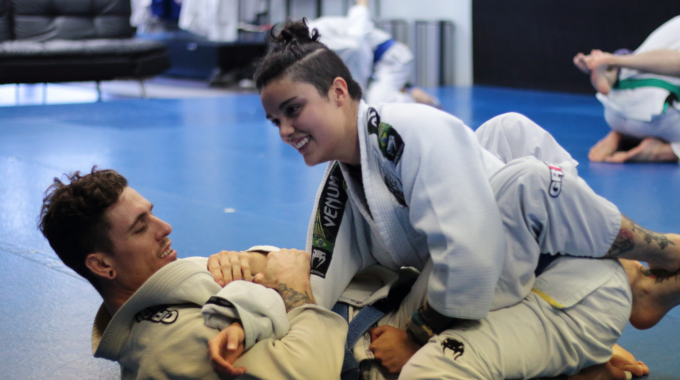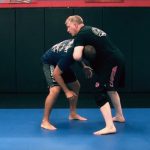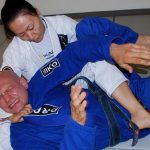
Injury Prevention in Grappling Sports – Part III
Last week, we discussed how early intervention for injuries in Jiu Jitsu is critical to prevent a minor injury from becoming a major injury which will keep you off the mats much longer. We talked about several ways you can do that and some minor interventions you can do.
Throughout the remainder of this blog, we will discuss specific regions injuries occur, some early intervention techniques you can use and some exercises you can do that will reduce the risk for these injuries. First and foremost, this blog and the information contained within this blog should not be considered medical advice or replace advice or information gained through examination from your health care professional. That said, we will cover common (not all) injuries we typically see in Jiu Jitsu, some early intervention that can be deployed and exercises that can aid in reduction of.
 One of the most common injuries we see is neck injuries. With the large percentages of choke submissions, it would make sense that the cervical spine (neck) would be a vulnerable area for injury. The area of the neck that is involved can depend on several factors and on the type of choke that is submitted. To understand this, we must first take a look at a section of the spine called a vertebral spinal segment.
One of the most common injuries we see is neck injuries. With the large percentages of choke submissions, it would make sense that the cervical spine (neck) would be a vulnerable area for injury. The area of the neck that is involved can depend on several factors and on the type of choke that is submitted. To understand this, we must first take a look at a section of the spine called a vertebral spinal segment.
What is depicted here is the bone-disc-bone interface (spinal segment). For orientation purposes, the front of the spinal segment is where your nose would be and the back is where the back of your head would be. Here the vertebra above (bone) is separated from the vertebra below by the intervertebral disc. This disc serves as the cushion between the two segments. What this picture does not reflect is the muscles that surround the spinal segments and which can also be injured.
Injuries in the spine can occur a lot of different ways and involve a lot of different tissues. Here we will discuss some common injuries and what can be done to treat and prevent these injuries. All neck injuries are not the same. The type of injury that can occur can depend on the mechanism of injury (falling on neck during take down) or type of choke that is involved (guillotine choke versus cross collar versus rear naked choke versus bow and arrow).
 Guillotine choke or triangle choke – with the extreme amount of flexion and pressure that occurs with these two chokes, the neck injury will usually involve the muscles on the back of the neck (from trying to resist the choke) or from pressure on the intervertebral disc under high pressure with end range of motion of neck flexion. This can lead to stiffness of the back of the neck, difficulty holding head off the mat, headaches/migraines or in extreme cases tingling and numbness down the arm or weakness in the arm.
Guillotine choke or triangle choke – with the extreme amount of flexion and pressure that occurs with these two chokes, the neck injury will usually involve the muscles on the back of the neck (from trying to resist the choke) or from pressure on the intervertebral disc under high pressure with end range of motion of neck flexion. This can lead to stiffness of the back of the neck, difficulty holding head off the mat, headaches/migraines or in extreme cases tingling and numbness down the arm or weakness in the arm.
 Cross collar choke or rear naked choke – with the extreme pressure and often natural defense position (hands on the opponents forearm and pulling head back) this will usually involve the muscles on the back of the neck and the facet joints (joint between the upper bone and lower bone) on both sides. Pulling the head back under high tension and with maximal muscle contract will often irritate the facet joints. This will often lead to stiffness of the neck, inability to extend the neck (look over head), look over your shoulder (often turn to look with your entire upper body versus just turning your head), and headaches/migraines. In extreme cases, this may also lead to tingling and numbness down the arm/hand and weakness.
Cross collar choke or rear naked choke – with the extreme pressure and often natural defense position (hands on the opponents forearm and pulling head back) this will usually involve the muscles on the back of the neck and the facet joints (joint between the upper bone and lower bone) on both sides. Pulling the head back under high tension and with maximal muscle contract will often irritate the facet joints. This will often lead to stiffness of the neck, inability to extend the neck (look over head), look over your shoulder (often turn to look with your entire upper body versus just turning your head), and headaches/migraines. In extreme cases, this may also lead to tingling and numbness down the arm/hand and weakness.
 Bow and Arrow choke – with the extreme amount of pressure and rotation that occurs with this choke, this will usually involve the muscles on the back and side of the neck and the facet joints (joint between the upper bone and lower bone) on one side. Depending on the amount of rotation and pressure, this can also impinge on the nerve root. This will often lead to stiffness of the neck, inability to extend the neck (look over head) with one side more painful than the other, inability to look over one shoulder versus the other. In extreme cases, this may also lead to tingling and numbness down the arm/hand and weakness.
Bow and Arrow choke – with the extreme amount of pressure and rotation that occurs with this choke, this will usually involve the muscles on the back and side of the neck and the facet joints (joint between the upper bone and lower bone) on one side. Depending on the amount of rotation and pressure, this can also impinge on the nerve root. This will often lead to stiffness of the neck, inability to extend the neck (look over head) with one side more painful than the other, inability to look over one shoulder versus the other. In extreme cases, this may also lead to tingling and numbness down the arm/hand and weakness.
As you can see, not all neck injuries are the same. There are a lot of factors that weight into what tissues are involved as well as to the severity of the injury. After hearing this description, you hopefully begin to see why it is important to have a PT or MD that understands this sport. Knowing the mechanism of injury and potential tissues that are involved means getting a more targeted intervention which expedites recover, leads to a better outcome and gets you back on the mats at 100%.
Next week, we will dive into some of the common sign and symptoms associated with these neck injuries, what course of care you should seek and what exercises you can do to prevent. We hope you enjoyed the start of this series. If you did, please share with your colleague and follow us on instagrm @ bjjpt_acl_guy and twitter @acl_prevention. #ViPerformAMI #ACLPlayItSafe